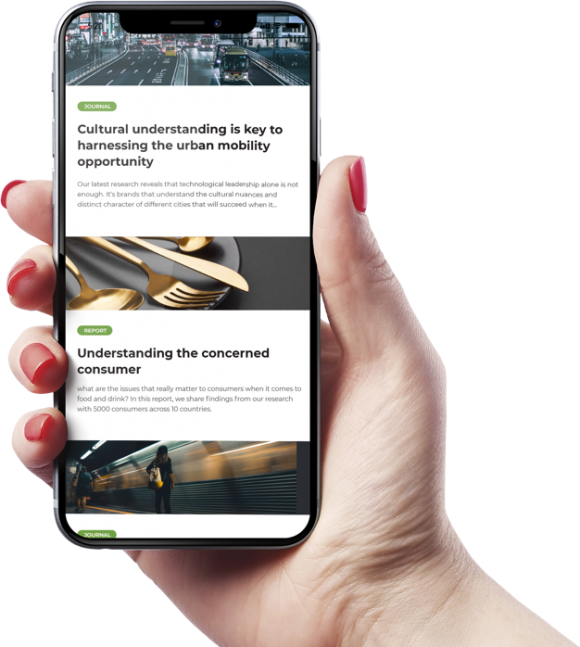Brands often stumble by failing to understand the unique preferences of different markets. A campaign that soars in one region can completely miss the mark in another. This challenge underscores the need for global brands to craft market-specific personas.
Accurate market-specific personas enable brands to connect more deeply with their audiences, driving engagement and loyalty.
Navigating this landscape requires advanced strategies and a deep understanding of diverse markets.
The Strategic Importance of Cultural Sensitivity in Persona Development
Understanding cultural nuances is essential for developing accurate and effective personas. These nuances significantly impact consumer behavior and decision-making processes. Ignoring or misinterpreting cultural differences can lead to misguided strategies and failed campaigns.
The Impact of Cultural Nuances on Consumer Behavior and Decision-Making
Cultural factors influence how consumers perceive products, respond to marketing messages, and make purchasing decisions. For instance, individualistic cultures like those in the US and Western Europe tend to value personal achievements and independence. In contrast, collectivist cultures, like many Asian countries, emphasize group harmony and family ties.
This difference in values affects everything from advertising appeals to product features that resonate with consumers. A campaign that highlights personal success may be effective in the US but could be less impactful in Japan, where group success and consensus are more highly valued.
Illustrating Cultural Missteps in Persona Creation
Consider a major beverage company’s attempt to launch a new product in the Middle East. Their persona development overlooked the cultural significance of certain colors and symbols, leading to packaging that unintentionally offended potential customers. Sales plummeted, and the company had to undergo a costly rebranding effort to rectify the mistake.
Another example involves a global fast-food chain that failed to account for dietary restrictions in India. Their initial personas did not reflect the predominance of vegetarianism in the market. As a result, their product offerings were misaligned with local preferences, leading to poor market penetration and necessitating a complete menu overhaul.
Strategies for Incorporating Cultural Sensitivity into Persona Frameworks
| Strategy | Description |
| Conduct In-Depth Cultural Research | Study local customs, values, language nuances, and social norms to understand the cultural context of each market. |
| Engage Local Experts | Collaborate with local market researchers, cultural consultants, and consumer psychologists to gain insights into regional preferences and behaviors. |
| Use Diverse Data Sources | Combine qualitative and quantitative data to capture a holistic view of consumer behavior. Methods include surveys, focus groups, social media analysis, and ethnographic studies. |
| Continuously Update Personas | Regularly update personas to reflect changes in societal values, trends, and consumer attitudes. |
Regional Preferences and Their Influence on Personas
Regional preferences play a crucial role in shaping consumer expectations. These preferences are influenced by various factors, including local traditions, climate, economic conditions, and historical context. Understanding these regional differences is essential for creating accurate and effective personas.
For instance, in Northern Europe, consumers may prioritize sustainability and eco-friendly products due to the region’s strong environmental consciousness. Consumers in parts of Southeast Asia might prioritize affordability and practicality due to differing economic conditions. These regional preferences affect product choices and how brands should communicate their value propositions.
Moreover, regional preferences often dictate the preferred shopping channels and purchasing behaviors. While e-commerce might dominate in tech-savvy regions like East Asia, traditional retail might still hold significant sway in other parts of the world. Recognizing these differences allows brands to tailor their strategies accordingly, ensuring they effectively meet consumer expectations.
Examples of Successful Regional Adaptations in Persona Development
Image credit: Netflix
One notable example of successful regional adaptation is Netflix’s approach to content creation. Recognizing the diverse tastes of its global audience, Netflix invests heavily in producing and acquiring content that resonates with specific regional preferences. For example, it has developed and promoted K-dramas for its South Korean audience and Bollywood films for its Indian viewers. This strategy has helped Netflix grow its subscriber base by aligning its offerings with regional tastes.
Image credit: Coca Cola
Another example is Coca-Cola’s regional marketing campaigns. In Mexico, Coca-Cola introduced a sweeter variant of its classic soda to cater to local taste preferences. Additionally, the brand’s marketing campaigns often feature culturally relevant themes and local celebrities to build a deeper connection with the audience.
Methodologies for Researching and Integrating Regional Preferences
| Methodology | Description |
| Market Segmentation Analysis | Use market segmentation techniques to identify and understand different consumer groups within a region by analyzing demographic, psychographic, and behavioral data. |
| Cultural Immersion and Ethnographic Studies | Engage in cultural immersion and ethnographic research to gain firsthand insights into local customs, values, and daily life. |
| Surveys and Focus Groups | Conduct region-specific surveys and focus groups to gather direct feedback from consumers and uncover unique preferences, pain points, and motivations. |
| Social Media and Digital Analytics | Analyze social media trends and digital behaviors on platforms like Twitter, Instagram, and WeChat to understand regional preferences. |
| Collaboration with Local Partners | Work with local businesses, agencies, and influencers who have a deep understanding of the regional market to refine personas. |
Techniques for Data Collection and Analysis
Big data and artificial intelligence (AI) have revolutionized how brands understand and engage with diverse market segments. By processing vast amounts of data from various sources, brands can uncover patterns and insights that were previously unattainable.
AI algorithms can analyze consumer behavior across different regions, identifying trends and preferences unique to each market. For instance, machine learning models can segment audiences based on purchasing habits, online behavior, and social media interactions. This allows brands to create highly detailed and accurate personas that reflect the specific needs and desires of different market segments.
Powered by AI, predictive analytics can also forecast future behaviors and trends. By understanding these predictions, brands can proactively adjust their strategies to align with anticipated consumer demands. This approach enhances the relevance of marketing efforts and helps efficiently allocate resources.
Qualitative vs. Quantitative Data in Capturing Cultural and Regional Nuances
Both qualitative and quantitative data are essential in capturing the full spectrum of cultural and regional nuances for persona development. Each type of data offers unique insights that, when combined, provide a comprehensive understanding of the target audience.
- Quantitative Data: Quantitative data includes numerical information such as sales figures, website traffic, and demographic statistics. This type of data is crucial for identifying broad trends and patterns. For example, analyzing sales data across different regions can reveal which products are most popular in specific areas, helping brands tailor their offerings accordingly.
Surveys and structured questionnaires also fall under quantitative methods. They provide statistically significant insights into consumer preferences and behaviors. These tools can measure the frequency of certain behaviors, preferences for product features, and other critical metrics.
- Qualitative Data: Qualitative data, on the other hand, delves into the why behind consumer behaviors. This data is gathered through in-depth interviews, focus groups, and ethnographic research. Qualitative insights help brands understand the cultural context and emotional drivers behind consumer decisions.
For instance, interviews with consumers can reveal cultural attitudes towards certain products, providing nuanced insights that numbers alone cannot offer. Ethnographic studies allow researchers to observe consumers in their natural environments, offering a deeper understanding of how cultural norms influence behavior.
Tailoring Personas for Global Market Segments
Creating segmented personas requires a deep understanding of the cultural and regional identities that define various market segments. Each persona should be a composite of real-world insights, capturing specific consumer groups’ unique attributes and preferences.
To achieve this, brands must gather detailed information about the cultural contexts and societal norms influencing consumer behavior in each region. This involves integrating qualitative insights, such as cultural attitudes and lifestyle choices, with quantitative data like purchasing patterns and demographic information. The goal is to create personas that not only represent the demographics but also embody the cultural and regional characteristics of the target audience.
For example, a global fashion brand might develop personas that reflect the minimalist aesthetic preferred in Scandinavian countries, the vibrant and eclectic styles favored in parts of Africa, and the luxury-oriented preferences in the Middle East. Each persona would include detailed descriptions of the cultural influences, fashion preferences, and shopping behaviors unique to each region.
Balancing Global Consistency with Local Relevance in Persona Development
Balancing global consistency with local relevance is a critical aspect of brand persona development. While maintaining a cohesive brand identity is important, tailoring marketing strategies to resonate with local audiences is equally essential.
One approach is to establish a set of core brand values and messages that are universally applicable. These core elements provide a consistent foundation across all markets. From there, local adaptations can be made to reflect regional preferences and cultural nuances.
For instance, a global tech company might emphasize innovation and user-centric design as its core values. In the US, marketing materials could highlight cutting-edge technology and individual empowerment. The same company might focus on harmonious integration with daily life and superior craftsmanship in Japan.
By maintaining a balance between global consistency and local relevance, brands can ensure that their personas and marketing strategies are cohesive and culturally resonant.
Best Practices for Iterative Persona Refinement Based on Feedback and Data
Effective persona development is an ongoing process that requires continuous refinement based on feedback and data. Here are some best practices for iterative persona refinement:
- Regular Data Collection and Analysis: Continuously gather data from various sources, including customer feedback, sales data, and market research. Analyze this data to identify shifts in consumer behavior and emerging trends.
- Incorporate Customer Feedback: Actively seek feedback from consumers through surveys, focus groups, and social media interactions. Use this feedback to update and refine personas, ensuring they remain accurate and relevant.
- Monitor Market Changes: Stay informed about market changes, such as new competitors, regulatory developments, and economic shifts. These changes can impact consumer behavior and should be reflected in updated personas.
- Test and Iterate: Implement A/B testing and other experimental methods to evaluate the effectiveness of persona-driven marketing strategies. Use the results to make data-driven adjustments and improvements.
- Collaborate with Local Teams: Engage with local marketing teams and experts with firsthand knowledge of regional markets. Their insights are invaluable for refining personas to reflect local nuances better.
- Leverage Advanced Analytics: Utilize advanced analytics tools and AI to process large datasets and uncover deeper insights. These technologies help identify patterns and trends that might not be apparent through manual analysis.
Implementing and Testing Global Personas
Deploying personas effectively across different markets requires a strategic and localized approach. Here are key strategies to ensure successful implementation:
- Localized Campaigns: Tailor marketing campaigns to reflect each persona’s unique characteristics and preferences. This involves customizing messages, visuals, and channels to resonate with local audiences.
- Cross-functional collaboration: Work closely with local marketing teams, sales representatives, and customer service staff. Their insights and feedback are crucial for fine-tuning personas and accurately reflecting regional realities.
- Training and Alignment: Ensure that all team members, from marketing to product development, understand the personas and how to use them effectively. Provide training sessions and create detailed persona documentation to facilitate alignment.
- Adaptable Content: Develop adaptable content frameworks that can be easily modified for different markets. This includes creating a repository of modular content elements that can be mixed and matched to suit various regional preferences.
- Leverage Technology: Use marketing automation and CRM tools to manage and deploy personas across different markets. These tools can help track interactions, customize communications, and analyze results.
Measuring the Effectiveness of Personas in Various Cultural Contexts
To determine the effectiveness of personas in different cultural contexts, it’s essential to establish clear metrics and regularly evaluate performance. Here are steps to measure effectiveness:
- Performance Metrics: Define key performance indicators (KPIs) such as engagement rates, conversion rates, customer satisfaction scores, and brand perception metrics. These KPIs should align with the objectives of your persona-driven strategies.
- A/B Testing: Conduct A/B tests to compare the performance of different persona-driven campaigns. This helps understand which personas are most effective in specific regions and why.
- Customer Feedback: Gather customer feedback through surveys, interviews, and social media interactions. This qualitative data provides insights into how well personas resonate with target audiences.
- Sales Data Analysis: Analyze sales data to identify trends and patterns correlating with persona-driven initiatives. Look for increases in sales, repeat purchases, and customer lifetime value as indicators of success.
- Regional Reports: Generate regular reports that break down performance by region. These reports highlight successes, challenges, and areas for improvement, providing a clear picture of how personas perform across different cultural contexts.
Continuous Improvement and Adaptation Based on Market Feedback
Continuous improvement is vital for keeping personas relevant and effective. Here’s how to adapt based on market feedback:
| Action | Description |
| Feedback Loops | Establish feedback loops for continuous collection and analysis of data, including regular check-ins with local teams and ongoing customer surveys. |
| Persona Updates | Regularly review and update personas based on new data and feedback, adjusting demographic details, behavioral insights, and adding new preferences and pain points. |
| Market Trend Analysis | Stay informed about market trends and cultural shifts that could impact consumer behavior, using this information to proactively adjust personas and marketing strategies. |
| Iterative Testing | Implement a cycle of iterative testing and refinement, launching small-scale tests of updated personas, analyzing results, and making necessary adjustments. |
| Documentation and Training | Maintain comprehensive documentation of persona updates and ensure all relevant teams are informed and trained on the changes to ensure consistency and alignment. |
The Essential Role of Persona Development in Global Market Success
As brands expand their reach, the complexity of consumer behavior across different regions becomes increasingly apparent. A one-size-fits-all approach is ineffective and could cost brands significant opportunities to connect with their audiences.
Developing market-specific personas allows brands to understand and cater to each region’s unique preferences and cultural nuances. This tailored approach fosters deeper connections with consumers, enhances brand loyalty, and drives engagement. It also enables brands to anticipate and respond to market changes more effectively, maintaining their relevance and competitive edge.
Ignoring the diversity of global markets and relying on generic personas can lead to missteps, wasted resources, and missed opportunities. Brands that invest in sophisticated persona development are better equipped to navigate the complexities of global consumer behavior and achieve sustained success.
In a world where consumer expectations are continually evolving, the ability to create and refine personas that reflect regional identities and preferences is not just an advantage—it’s a necessity. Brands that recognize and act on this insight will thrive and set the standard for excellence in the global marketplace.




